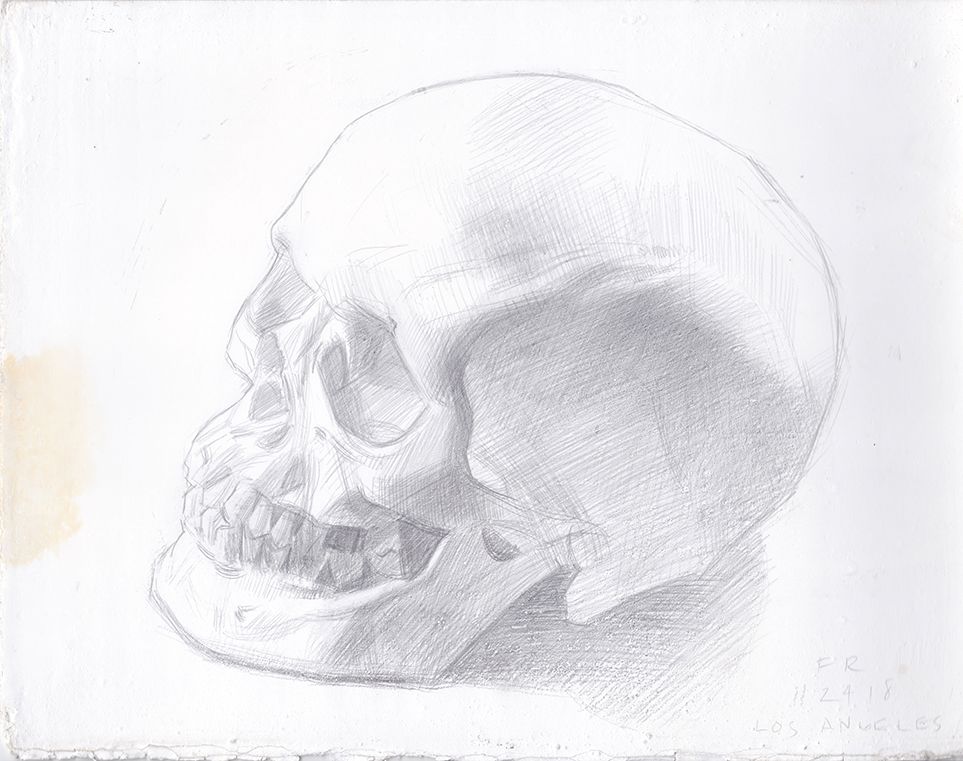
By Frank Ryan
Drawing has always been my primary means of expression for me. It has been a meditation and obsession since I was a boy. I always say my favorite drawing tool is a 2HB Dixon Ticonderoga pencil. But ever since I saw Leonardo da Vinci’s Studies of a Horse and Bust of a Warrior, I knew I had to explore the metalpoint medium.
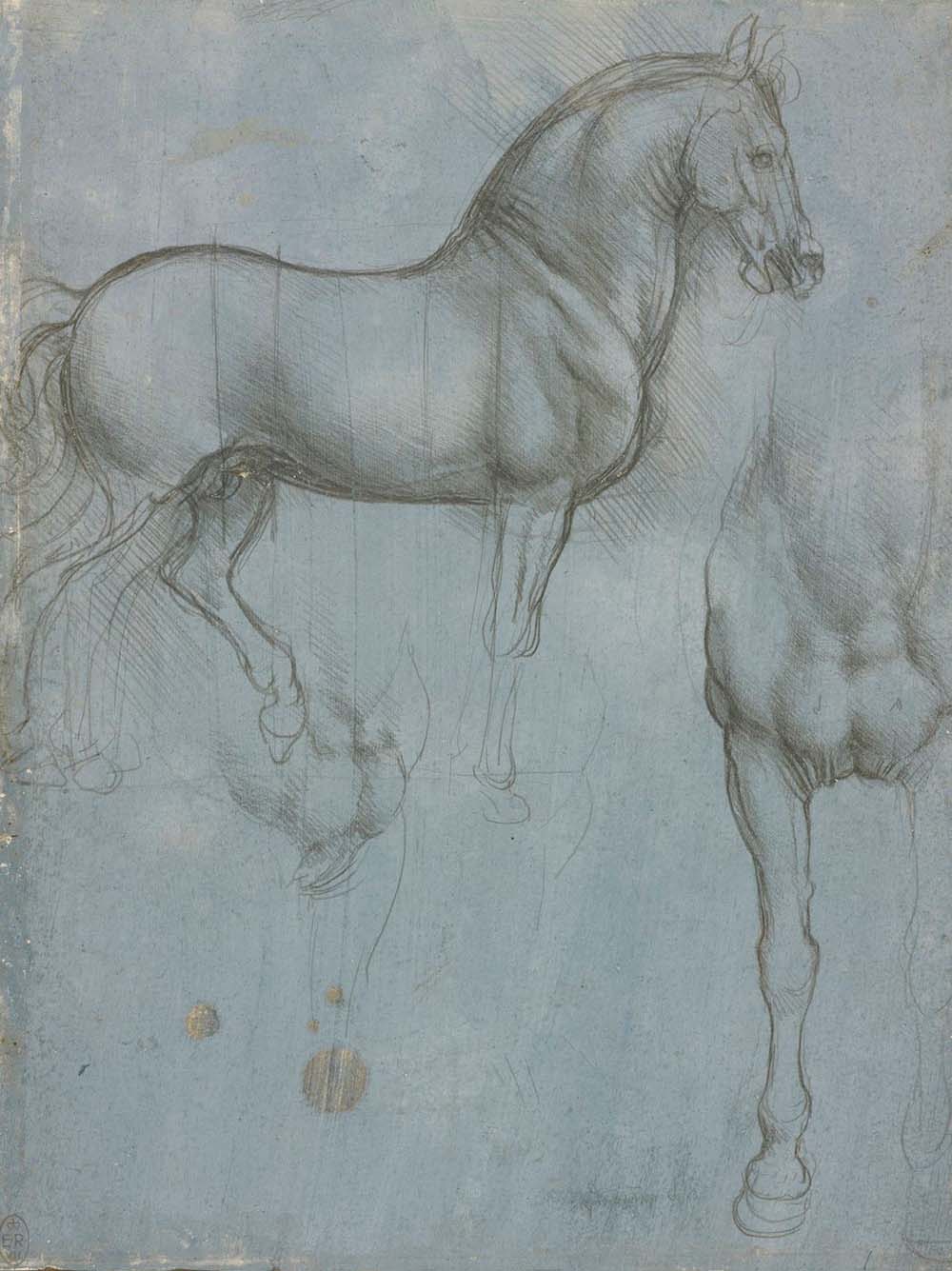
Studies of a Horse c.1488
Leonardo da Vinci (1452–1519)
Silverpoint on prepared paper, 250 x 187 mm, Royal Library, Windsor
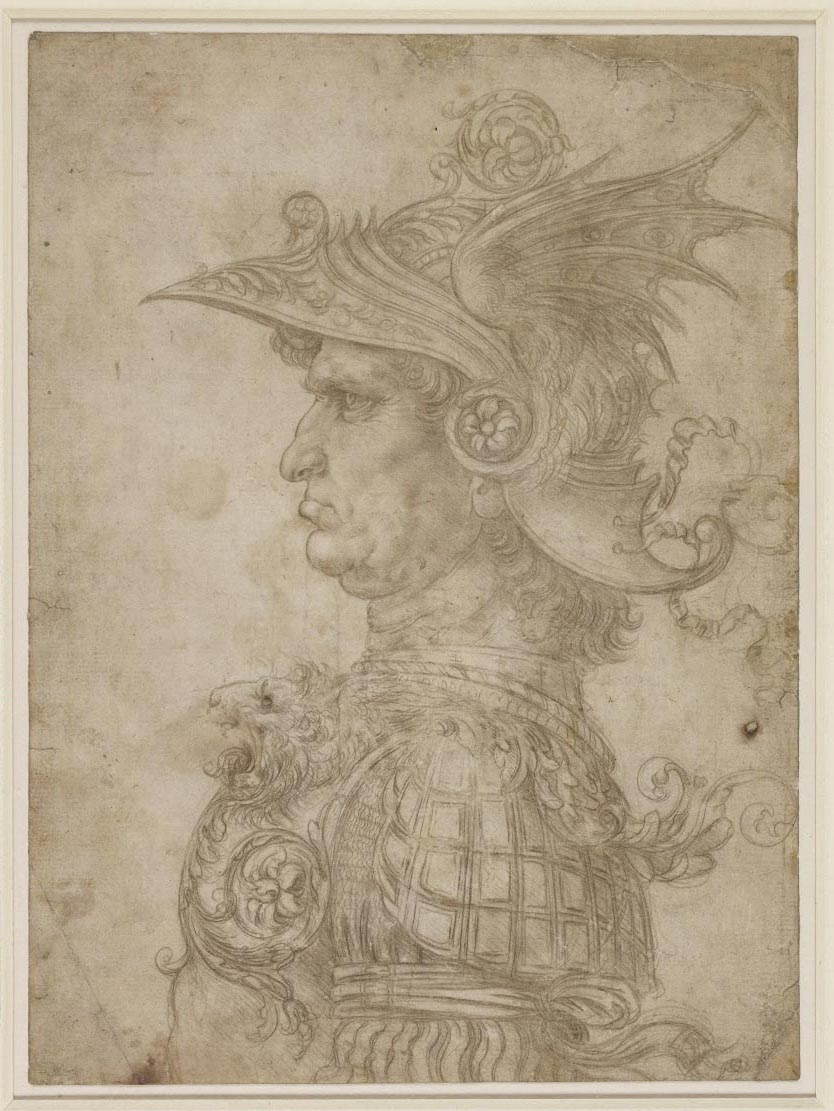
Bust of a Warrior c.1475–80
Leonardo da Vinci (1452–1519)
Metalpoint on prepared paper, 287 x 211 mm, British Museum, PD 1895,0915.474 (Malcolm collection)
Metalpoint drawing is a traditional medium most notable for hard, clearly defined lines and dense hatching drawn with a small rod of metal (such as silver, copper, lead, gold, etc.) held in a stylus. The most common examples of masters of metalpoint drawing are Leonardo da Vinci, Raphael, Van Eyck, and Albrecht Durer.
I found the materials I needed on the Natural Pigments website and quickly began experimenting (Read my review of Rublev Colours Traditional Silverpoint Ground below). I began with silver metals of varying softness, copper, and lead, and convinced myself that I had to try gold point (24 karats). See Gold Skull in Profile and Roland Sleeping.

Gold Skull in Profile
Frank Ryan
24-karat gold point on ACM prepared with Traditional Silverpoint Ground
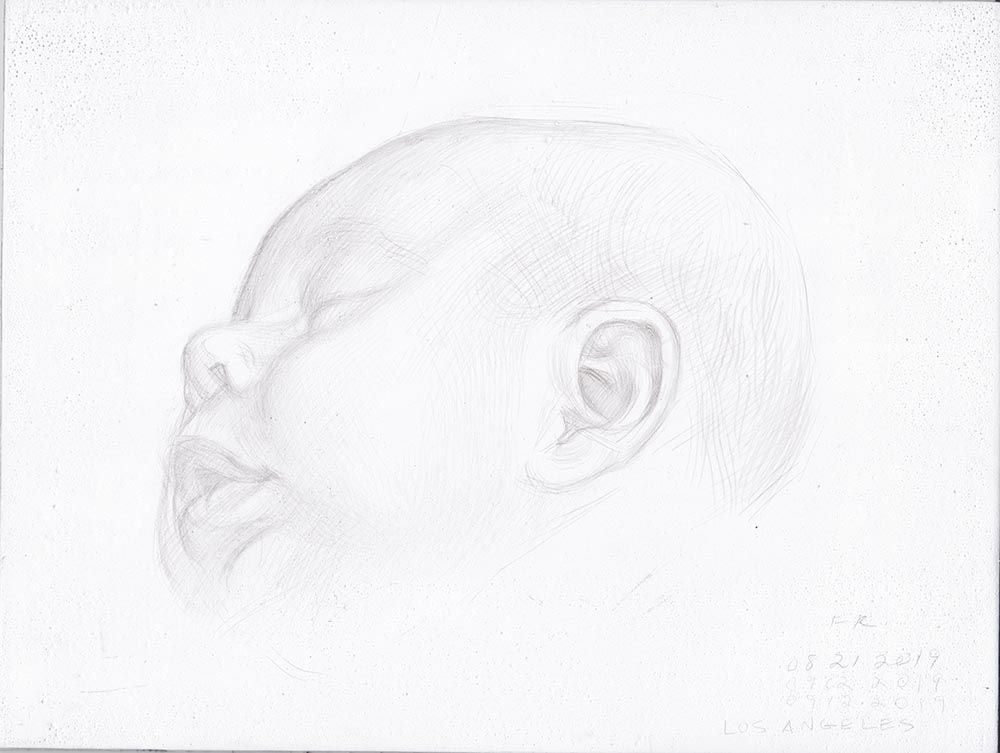
Roland Sleeping
Frank Ryan
24 karat gold point on ACM prepared with Traditional Silverpoint Ground, 6 x 9 inches
Unlike graphite pencils, metalpoint is indelible (the surface must be sanded off to remove unwanted lines). Drawing surfaces must be prepared with gesso so as not to rip or mar the surface. Paper, wood, or metal substrates are prepared with a ground comprised of chalk, hide glue, and an abrasive agent, like pulverized chicken bones. Silverpoint ground is heated in a double boiler and applied warm, in thin, successive layers, and sanded smooth. Most metals can be used to draw on such a ground—see Standing Female Nude Drawn with a Penny!
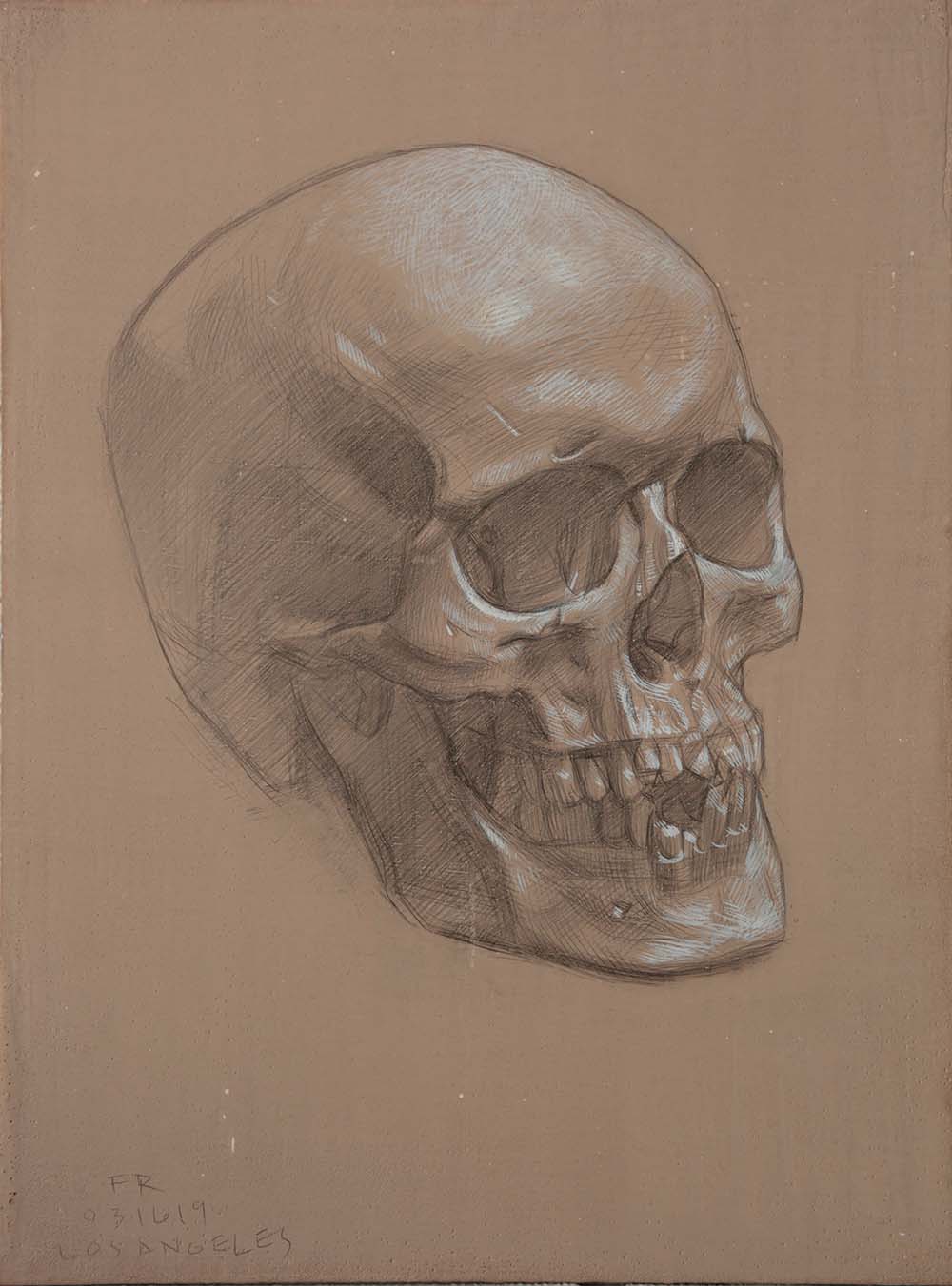
Death’s Head
Frank Ryan
Silverpoint (dead soft thick and half hard thin and white gouache on ACM prepared with Traditional Silverpoint Ground, tinted with fawn ocher
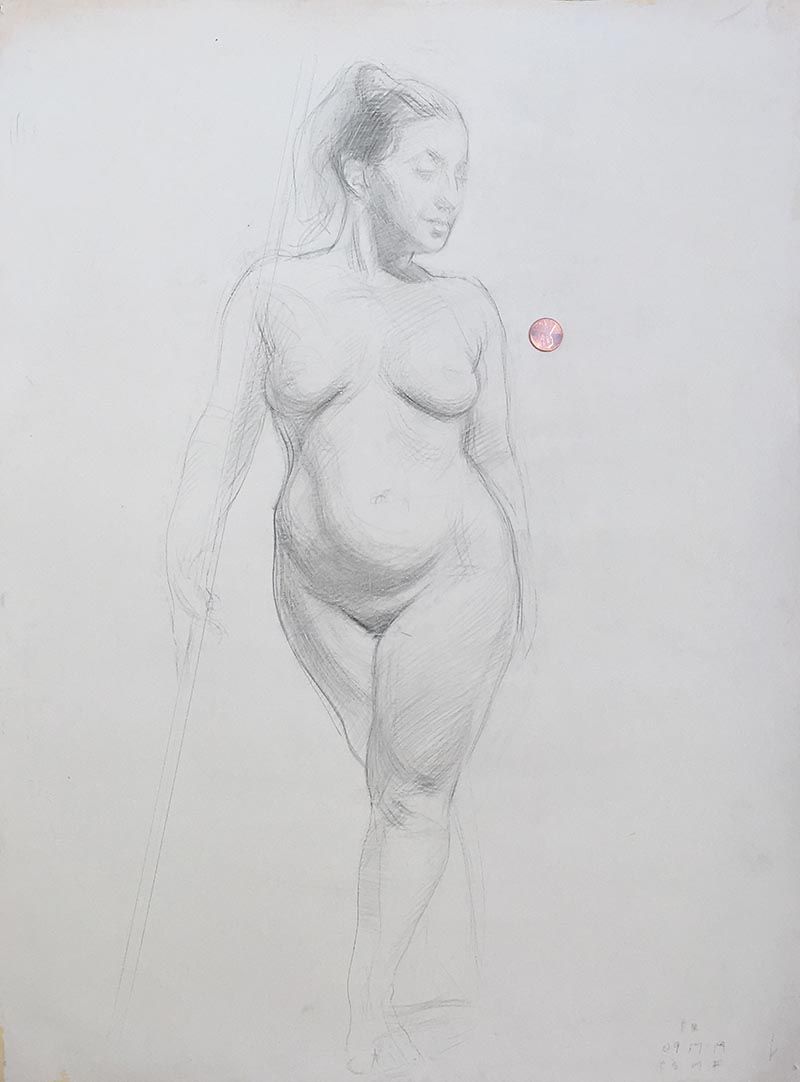
Standing Female Nude Drawn with a Penny
Frank Ryan
Silverpoint (dead soft thick, and half hard thin on paper prepared with Traditional Silverpoint Ground
Metalpoint drawings are predominantly linear, and tonality is derived from the meticulous layering of thousands of hatched lines. Pigment, such as ocher or indigo, can be added to the warm ground to provide a halftone into which darks are drawn in metalpoint and lights are painted in gouache or tempera with a fine brush. Brutal Self-Portrait and Death’s Head were both prepared in this manner.
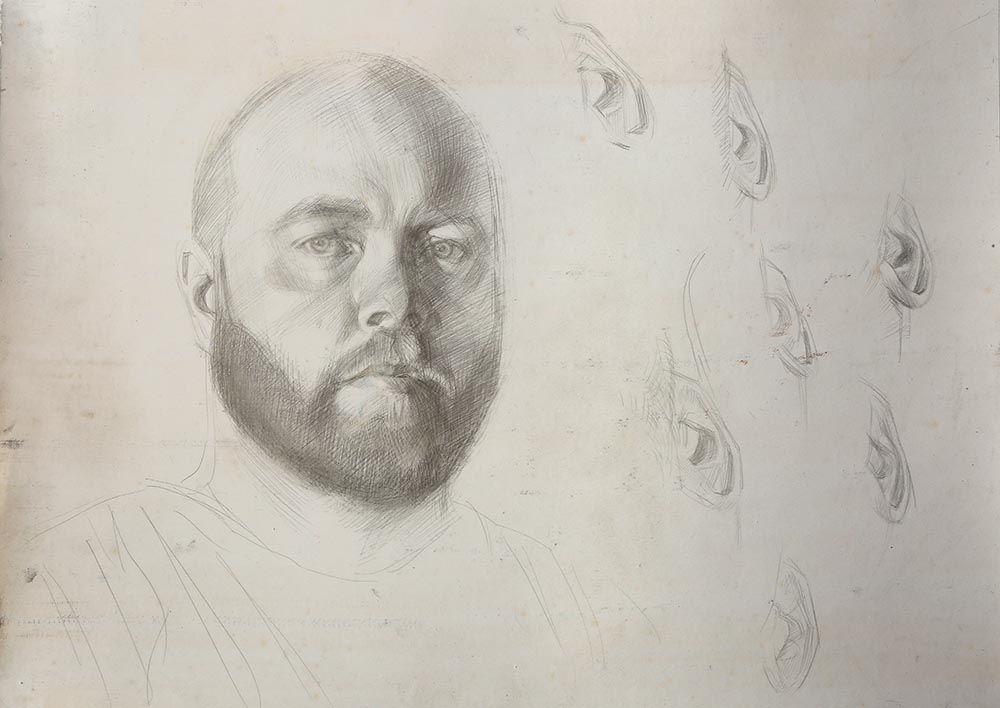
Small Study for Self Portrait
Frank Ryan
Copperpoint on yellow paper prepared with Traditional Silverpoint Ground, 14 x 18”
Traditional Silverpoint Ground
If drawing is a central part of your process, you must try metalpoint. I am a frequent user of Rublev Colours Traditional Silverpoint Ground, and I have fallen in love with the medium that, at one time, seemed to be so mysterious. I use this ground to prepare the odd-sized scraps of printmaking paper I have saved, pieces of wood, ACM panels, and even pages in my sketchbooks.
The ground is simple to prepare—mix equal parts by volume with water and let stand, heat, and apply while warm in successive layers. The suggested four coats yield an eggshell-like surface that is indescribable to draw on. I will often tint the ground with pigments to achieve the traditional blue and prepared pink grounds from the Italian Renaissance. This drawing medium has expanded the realm of possibility and made a fantastic traditional method accessible!











